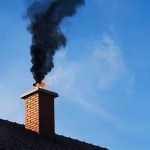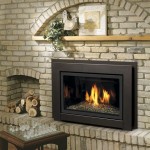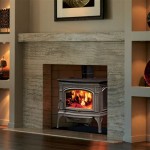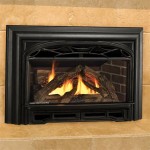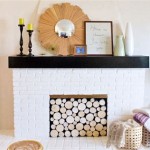Understanding and Selecting Fireplace Glass Door Screens
Fireplace glass door screens are protective enclosures designed to fit over the opening of a fireplace. They serve multiple purposes, including enhancing safety, improving energy efficiency, and adding aesthetic appeal to a hearth. These screens are typically constructed with a metal frame, often made of steel or aluminum, and tempered glass panels that can withstand the high temperatures generated by a fire. Understanding the different types, features, and considerations for installation and maintenance is crucial for selecting the correct glass door screen for a fireplace.
The primary function of a fireplace glass door screen is to prevent sparks, embers, and debris from escaping the fireplace and potentially causing fires or damage to surrounding furnishings. Without a screen, these hazards can easily ignite carpets, furniture, or other flammable materials in the room. In addition to fire safety, glass door screens also protect children and pets from accidentally coming into contact with the flames or hot surfaces inside the fireplace.
Beyond safety, fireplace glass door screens contribute to improved energy efficiency. When the fireplace is not in use, a closed glass door screen helps to prevent drafts from entering the house through the chimney. This reduces heat loss during the winter months and helps to maintain a more consistent temperature throughout the home, leading to lower heating costs. Conversely, during the summer, a closed screen can help to prevent warm air from entering the house through the chimney, reducing the load on air conditioning systems.
The aesthetic appeal of a fireplace glass door screen is another significant factor for many homeowners. These screens are available in a wide variety of styles, finishes, and designs, allowing homeowners to customize the look of their hearth to complement their existing decor. Whether the preference is for a sleek and modern design or a more traditional and ornate style, there is a glass door screen to suit virtually any aesthetic. The addition of a glass door screen can transform the fireplace from a simple functional element into a focal point of the room.
Key Considerations for Choosing a Fireplace Glass Door Screen
Selecting the right fireplace glass door screen requires careful consideration of several factors to ensure a proper fit, optimal performance, and desired aesthetic. These factors include accurate measurements, design and style preferences, and the type of fireplace.
Accurate Measurements: Obtaining precise measurements of the fireplace opening is the first and most crucial step in selecting a glass door screen. The height and width of the firebox must be measured accurately to ensure that the screen fits properly. If the measurements are too small, gaps will be left around the edges of the screen, compromising its safety and energy efficiency. If the measurements are too large, the screen will not fit inside the firebox opening. It is essential to measure the firebox opening at its widest and tallest points, taking into account any irregularities or obstructions. In many cases, manufacturers provide detailed instructions on how to measure the fireplace opening correctly. These instructions should be followed meticulously to ensure accurate results. Some fireplaces have arched or irregular openings, which may require custom-made screens. Consulting with a fireplace professional is recommended for fireplaces with non-standard openings.
Design and Style Preferences: Fireplace glass door screens are available in a wide range of styles and finishes to suit different design preferences. The style of the screen should complement the overall decor of the room. Common styles include traditional, modern, and rustic. Traditional screens often feature ornate details, such as decorative scrollwork or intricate patterns. Modern screens typically have clean lines and minimalist designs. Rustic screens may incorporate elements such as hammered metal or distressed finishes. The finish of the screen should also coordinate with the surrounding decor. Common finishes include black, brass, nickel, and copper. Black finishes are versatile and can complement a wide range of styles. Brass finishes add a touch of elegance and warmth. Nickel finishes provide a sleek and contemporary look. Copper finishes offer a rustic and vintage appeal. The type of glass used in the screen is another important consideration. Clear glass provides an unobstructed view of the fire, while tinted or textured glass can add visual interest. Options such as tempered glass, which is more resistant to heat and impact, are also available.
Fireplace Type: The type of fireplace is a crucial factor in selecting a glass door screen. Different types of fireplaces require different types of screens. The most common types of fireplaces include masonry fireplaces, prefabricated fireplaces, and gas fireplaces. Masonry fireplaces are built on-site using bricks or stones. They typically have larger openings and require heavier-duty screens. Prefabricated fireplaces are factory-built units that are installed as a complete system. They often have specific requirements for the type of screen that can be used. Gas fireplaces are fueled by natural gas or propane. They typically require screens that are specifically designed for gas fireplaces, which may include features such as ventilation slots to prevent gas buildup. It is essential to consult the fireplace manufacturer's instructions to determine the appropriate type of screen for the specific fireplace model. Using the wrong type of screen can pose safety hazards and may void the fireplace warranty.
Different Types and Features of Fireplace Glass Door Screens
The market offers a variety of fireplace glass door screens, each with unique features and benefits. Understanding the different types allows homeowners to make informed decisions based on their specific needs and preferences.
Bifold Doors: Bifold doors are a common type of fireplace glass door screen. They consist of two glass panels that fold inward when opened. Bifold doors offer a wide opening, allowing for easy access to the firebox for adding wood or tending to the fire. This type of screen is well-suited for fireplaces that are frequently used. The bifold design reduces the amount of space required to open the doors compared to single-panel doors. The hinges on bifold doors should be sturdy and durable to withstand repeated use. Some bifold doors feature adjustable hinges that allow for fine-tuning the alignment of the doors. Bifold doors are available in a variety of styles and finishes to complement different decor preferences.
Single-Panel Doors: Single-panel doors consist of a single large glass panel that swings open. This type of screen provides an unobstructed view of the fire and is often preferred for its clean and minimalist design. Single-panel doors require more space to open compared to bifold doors. The hinges on single-panel doors must be strong enough to support the weight of the glass panel. Some single-panel doors feature self-closing mechanisms that ensure the door remains closed when not in use. Single-panel doors are available in a variety of glass options, including clear, tinted, and textured glass. The frame of a single-panel door should be sturdy and durable to prevent warping or bending over time.
Sliding Doors: Sliding doors feature two glass panels that slide horizontally past each other. This type of screen is ideal for fireplaces with limited space in front of the hearth. Sliding doors allow for easy access to the firebox without requiring the doors to swing open. The tracks on sliding doors should be smooth and durable to ensure easy operation. Some sliding doors feature locking mechanisms that provide added security. Sliding doors are available in a variety of styles and finishes to complement different decor preferences. The glass panels on sliding doors should be made of tempered glass for safety and durability.
Mesh Screens: While this article focuses on glass door screens, it's worth noting that mesh screens are an alternative. Mesh screens consist of a metal mesh curtain that hangs in front of the fireplace opening. Mesh screens provide protection from sparks and embers but do not offer the same level of energy efficiency as glass door screens. Mesh screens are typically less expensive than glass door screens. Mesh screens are available in a variety of styles and finishes to complement different decor preferences. The mesh should be fine enough to prevent sparks and embers from escaping. Some mesh screens feature decorative accents such as chain links or metal beads.
Installation and Maintenance of Fireplace Glass Door Screens
Proper installation and regular maintenance are essential for ensuring the longevity and optimal performance of a fireplace glass door screen. Following the manufacturer's instructions and performing routine cleaning tasks will help to keep the screen in good condition and prevent potential problems.
Installation: Installing a fireplace glass door screen typically involves attaching the screen to the fireplace opening using brackets or screws. The specific installation process may vary depending on the type of screen and the type of fireplace. It is essential to follow the manufacturer's instructions carefully to ensure that the screen is installed correctly. Before beginning the installation, gather all necessary tools and materials, such as a drill, screwdriver, level, and measuring tape. Ensure that the fireplace opening is clean and free of debris before installing the screen. If the fireplace opening is uneven or irregular, shims may be needed to ensure a proper fit. Some screens may require professional installation, especially if they are custom-made or require modifications to the fireplace opening. Improper installation can compromise the safety and performance of the screen. After installing the screen, inspect it carefully to ensure that it is securely attached and that the doors operate smoothly.
Cleaning: Regular cleaning is essential for maintaining the appearance and functionality of a fireplace glass door screen. Over time, soot, ash, and other debris can accumulate on the glass and frame, making the screen look dull and unsightly. The frequency of cleaning will depend on how often the fireplace is used. For fireplaces that are used frequently, cleaning may be required as often as once a week. For fireplaces that are used less frequently, cleaning may only be required once a month. To clean the glass, use a specialized fireplace glass cleaner and a soft cloth. Avoid using abrasive cleaners or scouring pads, as these can scratch the glass. To clean the frame, use a mild soap and water solution and a soft cloth. Rinse the frame thoroughly with clean water and dry it with a clean cloth. Inspect the hinges and latches regularly and lubricate them as needed with a silicone-based lubricant. Remove any rust or corrosion from the frame using a wire brush or steel wool. Touch up any scratches or chips in the finish with a matching paint or touch-up kit.
Maintenance: In addition to regular cleaning, periodic maintenance is also necessary to ensure the longevity of a fireplace glass door screen. Inspect the screen regularly for any signs of damage, such as cracks, chips, or warping. Replace any damaged parts immediately to prevent further damage or safety hazards. Check the seals around the glass panels to ensure that they are intact and effective at preventing drafts. Replace any worn or damaged seals as needed. Inspect the firebox for any signs of creosote buildup. Creosote is a highly flammable substance that can accumulate in the chimney and firebox over time. If creosote buildup is present, have the chimney professionally cleaned to prevent chimney fires. Ensure that the damper is operating properly and that it seals tightly when closed. A leaky damper can allow heat to escape from the house, reducing energy efficiency. Consider having the fireplace and screen professionally inspected annually to ensure that they are in good working order. A professional inspection can identify potential problems before they become serious issues.

Ardmore Black Fireplace Door Woodland Direct

Standard Size Masonry Fireplace Doors Fixed Frame

2 Door Steel Fireplace Fire Screen With Tempered Glass Accents Black Com

Fireplace Glass Doors Vs Screens

Vail Mesh Fireplace Screen With Doors Pottery Barn

Fireplace Glass Doors By Thermo Rite Fireplaces Unlimited Heating Cooling

Kingson 2 Panel Fireplace Screen Door

Pleasant Hearth Easton Small Glass Fireplace Doors Ea 5010 The Home Depot

Gas Logs And Fireplace Doors The Fire Place Ltd

Stanbroil Fireplace Glass Bi Fold Style Door Black Finish Large Decorative Screen For Accessories Outdoor
Related Posts

